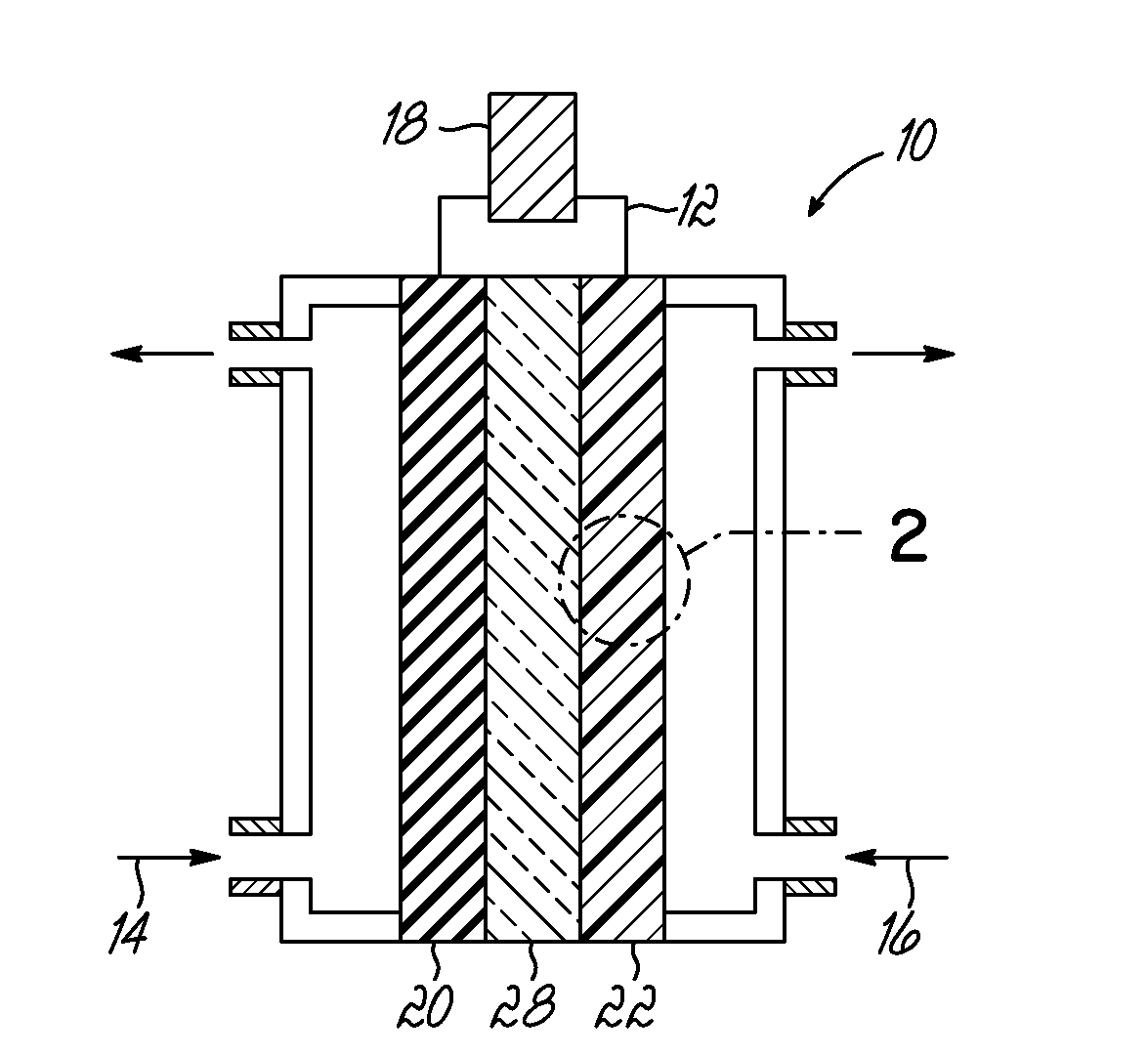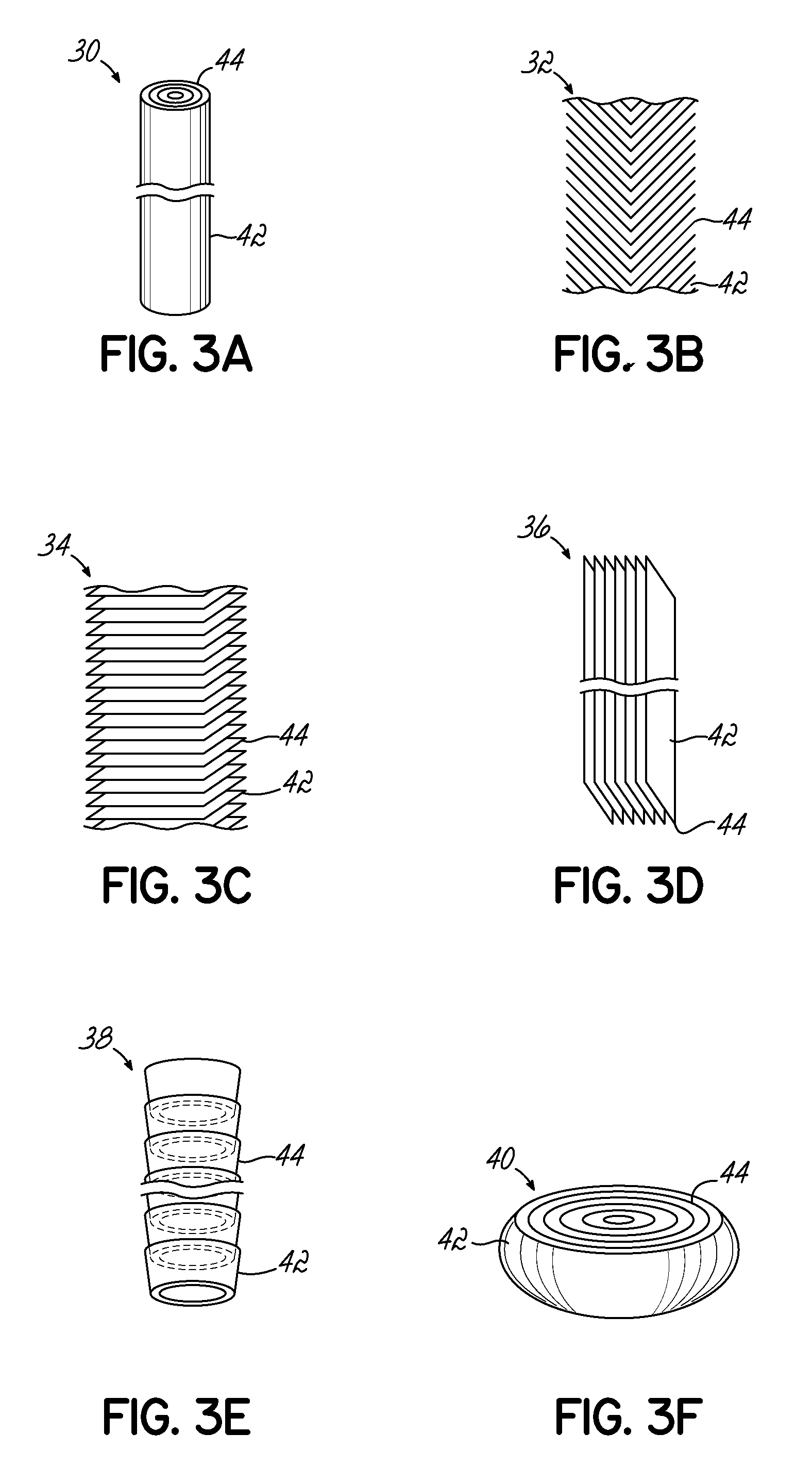Catalysts for use in electrochemical applications and electrodes and devices using same
- Summary
- Abstract
- Description
- Claims
- Application Information
AI Technical Summary
Benefits of technology
Problems solved by technology
Method used
Image
Examples
examples
[0052]CNxPy catalysts and CNx catalysts were synthesized by pyrolyzing acetonitrile over growth medium of a seed material of MgO impregnated with 2 wt. % Fe via incipient-wetness-impregnation (IWI). Each of the growth mediums for the CNxPy and CNx were different. For the CNxPy catalysts, the Fe—MgO seed material was subject to an additional IWI step with tri-phenylphosphine (TPP) and diethyl ether at predetermined ratios of P to Fe as indicated in FIGS. 4 and 5. As shown, the CNxPy catalysts were grown with P / Fe ratios of 0.33, 1, 3, 20, and 30. This additional treatment was conducted prior to pyrolyzing acetonitrile over the seed material.
[0053]To isolate the effect of the additional IWI step with TPP, a second impregnation of diethyl ether without TPP was prepared (labeled “P / Fe=blank” or phosphorus free) from which a CNx catalyst was grown. The resulting CNx (P / Fe=0 blank) catalyst was also measured for comparison and is shown in FIGS. 4 and 5. In addition, another CNx catalyst (...
PUM
| Property | Measurement | Unit |
|---|---|---|
| Fraction | aaaaa | aaaaa |
| Structure | aaaaa | aaaaa |
Abstract
Description
Claims
Application Information
 Login to View More
Login to View More - R&D
- Intellectual Property
- Life Sciences
- Materials
- Tech Scout
- Unparalleled Data Quality
- Higher Quality Content
- 60% Fewer Hallucinations
Browse by: Latest US Patents, China's latest patents, Technical Efficacy Thesaurus, Application Domain, Technology Topic, Popular Technical Reports.
© 2025 PatSnap. All rights reserved.Legal|Privacy policy|Modern Slavery Act Transparency Statement|Sitemap|About US| Contact US: help@patsnap.com



